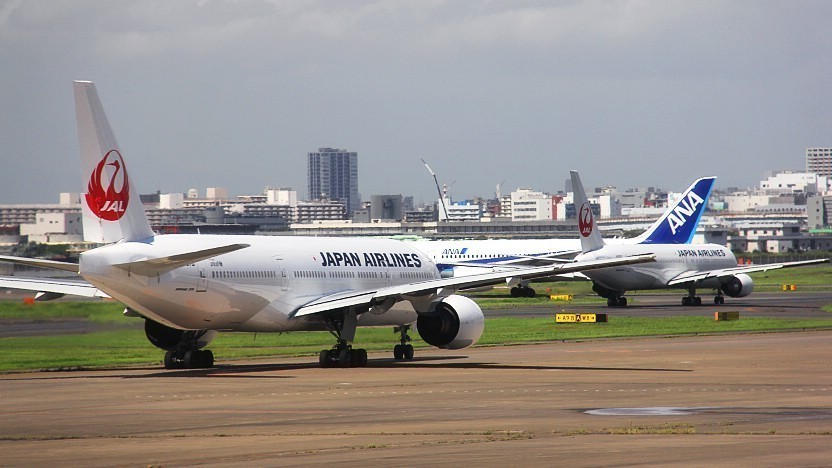Budget Travel - Transportation

Transportation expenses will make up a considerable part of your travel budget. They consist of the cost for your flight to Japan as well as urban and possibly long distance transportation inside Japan.
International flights
The following are ways to save on airfare to Japan:
- Fly outside the peak seasons. The difference in air fares can be dramatic between high seasons and low seasons and between weekdays and weekends.
- Search for and compare special offers by travel agents, newspapers, travel websites and the airlines' websites. Many airlines have a "special offers" section on their website. If your city has a sizable Japanese community, chances are that a large Japanese travel agency, such as HIS, operates a branch there. Check them out, as they tend to be well informed about offers on flights to Japan and to have access to low fares.
- If an option, consider using low-cost carriers, such as AirAsia, Jetstar or Zipair, which are serving Japan from a number of destination in eastern Asia and Australia, in particular.
- Keep domestic transportation in mind when booking your international tickets. An open-jaw ticket, which allows you to enter Japan through one airport and leave through another, can save you from costly backtracking across Japan. Also consider purchasing domestic air tickets in conjunction with your international flight as some airlines offer discounts on connecting domestic flights.
- Consider tour packages. Good packages combine airfare and accommodation at low rates, unavailable to individual consumers. There are tour packages for both the individual travelers and those who prefer to travel with a guide.

Long-distance travel within Japan
Careful planning of your itinerary can have a huge effect on your transportation budget. The most wallet-friendly way of travel is to avoid the costs of long distance domestic travel altogether and concentrate on just one region or city. For example, limiting your visit to either the Kanto Region around Tokyo or the Kansai Region around Kyoto and Osaka rather than doing both in the same trip can save you tens of thousands of yen per person in transportation costs.
However, if you do wish to visit multiple regions of Japan, then the following collection of options and deals can save you some money:
- Japan Bus Pass (more information)
The Japan Bus Pass is a pass for long distance bus travel in Japan. If used efficiently, the pass can reduce transportation costs to unbelievably low levels for those willing to spend some nights on a bus. The pass is available as a 3-day, 5-day and 7-day version and does not need to be used on consecutive days.
- Highway buses (more information)
Highway buses are one of the most economical ways to travel medium to long distances in Japan. While slower than trains, buses cost usually less than half, especially on the competitive Tokyo routes where discount fares can be incredibly low. Every prefecture is served by at least one bus company, with the major cities serving as regional hubs.
Overnight buses further increase the cost-effectiveness by saving on a night's accommodation and increasing your sightseeing time. Willer Express is one of the few highway bus companies with an English online reservation and payment system and highly competitive prices. They also offer the above mentioned Japan Bus Pass.
- Rail passes (more information)
Since its massive price increase in 2023, the nationwide Japan Rail Pass is now likely to be more expensive than regular train tickets and other transportation options and not recommended to budget travelers anymore. Regional rail passes, however, can be worth considering when visiting only a single or a couple of regions.
- Domestic flights (more information)
Competition between discount airlines, regular airlines, railways and overnight buses has produced a wide range of discount air fares and has made air travel a competitive budget alternative on many long distance routes, especially on the competitive Tokyo and Osaka routes. Skymark Airlines, Peach Aviation and Jetstar Japan offer particularly low fares.
- Ferries (more information)
On a small number of routes, domestic ferries can be an alternative option to trains, buses and planes. Second class fares for ferries tend to be relatively inexpensive.
- Rental cars (more information)
Rental cars can be both an economical and convenient option if you travel in large groups or in the remote countryside. When planning your travel budget, keep in mind that there are gasoline expenses and highway tolls in addition to the rental cost. Those using expressways extensively, should look into the various expressway passes are available to foreign tourists.
- Package tours
Heavily discounted package tours, which combine transportation with accommodation, are offered by travel agents for a wide range of domestic destinations across Japan.

Urban transportation
Cost on urban transportation can generally be reduced by planning out your route wisely. On each day, try to concentrate on just one part of the city instead of zigzagging around town. Thereby you can walk in between sights and minimize subway and bus travel.
- Day passes, regular tickets and prepaid cards
Day passes are available for most major Japanese cities. While some day passes are good deals, many others require you to do a lot of traveling before they pay off. As a result, regular tickets are not rarely cheaper than day passes, especially if plan your route wisely. Prepaid IC cards, such as Suica and Icoca, do not provide any discounts over regular tickets, but they are more convenient to use.
- Bicycles
Rental bicycles can be a convenient and economical way of exploring both cities and the countryside. Rental outlets are usually found around the train station. Rates vary widely but are typically a few hundred yen per hour or around 1000 yen per day.
Please check out the transportation pages of our sightseeing guide for details on each city, including the transportation pages about Tokyo, Kyoto and Osaka.
Questions? Ask in our forum.


